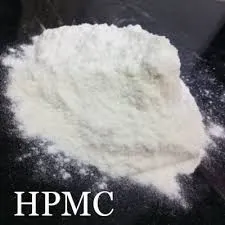
Oct . 10, 2024 15:42 Back to list
Safety Data Sheet for Hydroxyethyl Cellulose Overview and Key Information
Hydroxyethyl Cellulose (HEC) Safety Data Sheet Overview
Hydroxyethyl cellulose (HEC) is a non-ionic, water-soluble polymer derived from cellulose, a natural polymer. It is commonly used in various industries due to its thickening, gelling, and film-forming properties. HEC is widely applied in pharmaceuticals, cosmetics, food processing, and construction materials. Due to its widespread usage and the potential hazards associated with chemicals, understanding the safety and handling of HEC is essential.
Chemical Identification
HEC is produced by the etherification of cellulose, resulting in a white, powdery substance that is soluble in cold water, generating a viscous solution. Its chemical formula can vary, but it often includes the repeating units of hydroxyethyl ether. The specific gravity and molecular weight can also differ based on the degree of substitution during production.
Hazards Identification
According to the Safety Data Sheet (SDS), HEC is generally considered non-hazardous. However, it is important to manage any potential risk factors associated with its use. Inhalation of fine HEC dust can lead to respiratory irritation, and prolonged skin contact may cause irritation for sensitive individuals. Therefore, employing personal protective equipment (PPE), such as gloves and masks, is advisable during handling.
hydroxyethyl cellulose sds

First Aid Measures
In case of exposure, the SDS outlines specific first aid measures - Inhalation If HEC dust is inhaled, individuals should be moved to fresh air immediately. If breathing difficulties persist, seeking medical attention is crucial. - Skin Contact In case of skin irritation or an allergic reaction, the affected area should be washed with soap and water. If irritation continues, medical advice should be sought. - Eye Contact Rinse open eyes immediately with plenty of water for at least 15 minutes and seek medical eye care if irritation persists.
Handling and Storage
To ensure safe handling and storage of HEC, it should be stored in a cool, dry, well-ventilated area away from incompatible materials. Keeping HEC in tightly sealed containers can help prevent moisture absorption, which may affect its properties. During handling, minimizing dust generation and implementing proper ventilation are key to reducing inhalation risks.
Conclusion
Hydroxyethyl cellulose is a versatile material used across multiple industries and is relatively safe when handled appropriately. However, understanding its properties, potential hazards, and recommended safety measures is vital for ensuring the health and safety of those who work with or are exposed to this chemical. Always refer to the Safety Data Sheet for detailed information regarding specific HEC formulations.
-
Versatile Hpmc Uses in Different Industries
NewsJun.19,2025
-
Redispersible Powder's Role in Enhancing Durability of Construction Products
NewsJun.19,2025
-
Hydroxyethyl Cellulose Applications Driving Green Industrial Processes
NewsJun.19,2025
-
Exploring Different Redispersible Polymer Powder
NewsJun.19,2025
-
Choosing the Right Mortar Bonding Agent
NewsJun.19,2025
-
Applications and Significance of China Hpmc in Modern Industries
NewsJun.19,2025







